It is a scimitar-shaped estuary that joins the Bosphorus just at the point where that strait enters the Sea of Marmara, thus forming a peninsula the tip of which is “Old Istanbul” (ancient Byzantion and Constantinople). Its Greek and English names mean the same, but the significance of the designation “golden” is obscure, while its Turkish name Haliç simply means “estuary“. It has witnessed many tumultuous historical incidents, and its dramatic vistas have been the subject of countless works of art.
The Golden Horn is a flooded prehistoric estuary. It is 7.5 kilometers long and is 750 meters across at its widest. Its maximum depth, where it flows into the Bosphorus, is about 35 meters. It is today spanned by four bridges. Moving downstream, the first is the Haliç Bridge, literally Estuary Bridge. The former Galata Bridge was damaged by a fire in 1992; it was moved to the second position in pieces, re-assembled, and restored as the Eski Galata Bridge, literally Old Galata Bridge. The third one is the Atatürk (Unkapanı) Bridge. The current Galata Bridge was completed in 1994. A fifth bridge is currently under construction to connect the subway lines of the Istanbul Metro to the north and south of the Golden Horn.
History
The Golden Horn (Keras) forms a deep natural harbor for the peninsula it encloses together with the Sea of Marmara. The Byzantine Empire had its naval headquarters there, and walls were built along the shoreline to protect the city of Constantinople from naval attacks. At the entrance to the Horn on the northern side, a large chain was pulled across from Constantinople to the old Tower of Galata to prevent unwanted ships from entering. Known among the Byzantines as the Megàlos Pyrgos (meaning “Great Tower” in Greek), this tower was largely destroyed by the Latin Crusaders during the Fourth Crusade in 1204. In 1348 the Genoese built a new tower nearby which they called Christea Turris (Tower of Christ), now called Galata Tower.
There were three notable times when the chain across the Horn was either broken or circumvented. In the 10th century the Kievan Rus’ dragged their longships out of the Bosporus, around Galata, and relaunched them in the Horn; the Byzantines defeated them with Greek fire. In 1204, during the Fourth Crusade, Venetian ships were able to break the chain with a ram. In 1453, Ottoman Sultan Mehmed II, having failed in his attempt to break the chain with brute force, instead used the same tactic as the Rus’, towing his ships across Galata over greased logs and into the estuary.
After the conquest of Constantinople in 1453, Mehmed II resettled ethnic Greeks along the Horn in the Phanar (today’s Fener). Balat continued to be inhabited by Jews, as during the Byzantine age, though many Jews decided to leave following the takeover of the city. This area was repopulated when Bayezid II invited the Jews who were expelled from Spain to resettle in Balat. Today the Golden Horn is settled on both sides, and there are parks along each shore. The Istanbul Chamber of Commerce is also located along the shore, as are Muslim, Jewish and Christian cemeteries. The Galata Bridge connects the neighborhoods of Karaköy (the ancient Galata) and Eminönü.
Until the 1980s the Horn was polluted with industrial waste, but it has since been cleaned. Today its history and beauty make it a popular tourist attraction in Istanbul.
Leonardo’s bridge
In 1502 Leonardo da Vinci produced a drawing of a single-span 240-metre (790 ft) bridge over the Golden Horn as part of a civil engineering project for Sultan Bayezid II. Leonardo’s drawings and notes regarding this bridge are currently displayed at the Museo della Scienza e della Tecnologia in Milan, Italy.
The vision of Leonardo’s Golden Horn Bridge was resurrected in 2001, when a small footbridge based on Leonardo’s design was constructed near Ås in Norway.
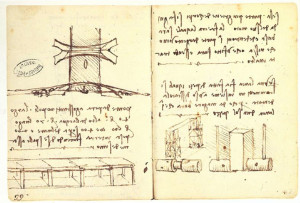
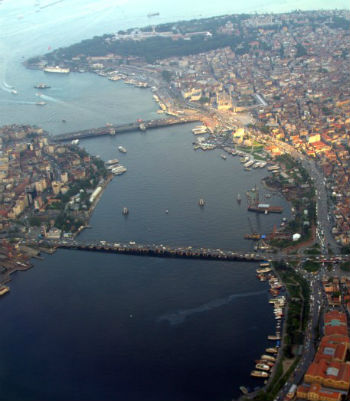
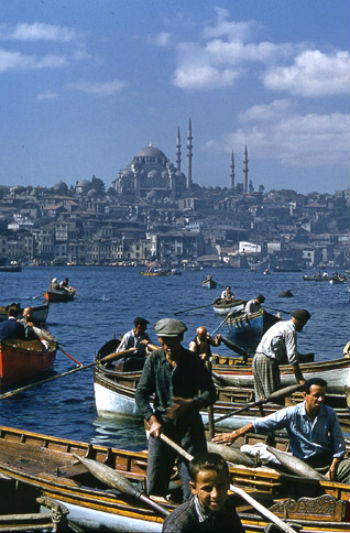
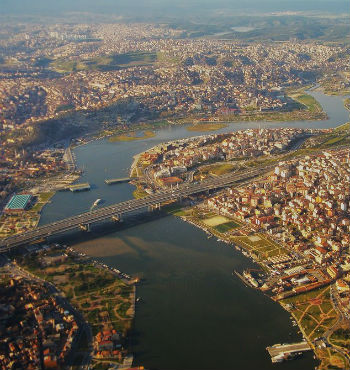
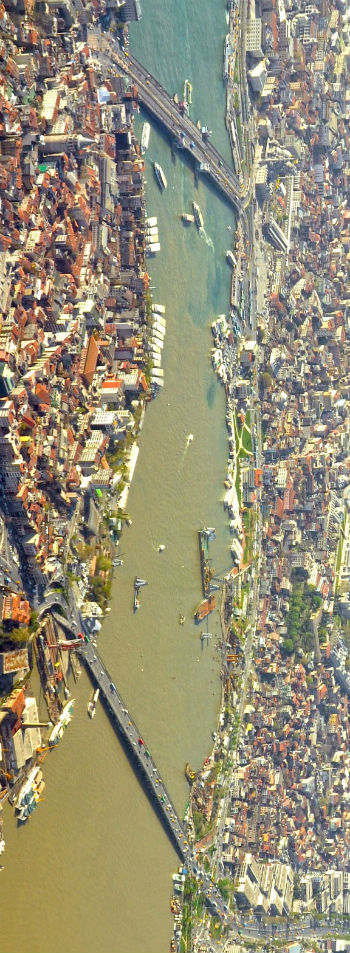


So much of life in Istanbul travels on and is dependent on the water. You can't help but see this waterway in your wanderings around Istanbul. Fishermen with their lines dangling off bridges, tour boats plying the waters, modern bridges carrying cars and trucks, it's all about the life of a big historic city.
The Golden Horn was lovely – but a little touristy. I appreciated it more from the water on the ferry. They did have a row of cute little old fashioned boats that looked with Arabian boats – you ate on them like little lunch places.
Istanbul it is really outstanding! I surely recomend it..
There are a lot of museums, ferries, boats and beautiful views to enjoy along the Golden Horn. You can keep your family busy for a day or two just in this area. Don't miss it!
the surroundings are recently renovated, always very attractive to stroll around. not touristic but if you are accompanied by a local you may want to stop by for a tea or coffee.
We did this tour by bus as the ferry quay at Eyup is closed until further notice and consequently there were no ferries operating. A boat would be the ideal way to see this beautiful expanse of water as it's 90 mins between tour buses which is far too long a wait.
Golden Horn is the place you will find several cultures, religions, 2 seas, history of thousands of years.
Every hour there is a public boat which departs from uskudar and goes upto the end of the Golden Horn. During that trip many historical parts of the Istanbul can be seen.
Each time we go to Istanbul we pick a different section of the city to explore, out of the tourist areas. This time we picked the Golden Horn area. I had no idea that there was a tram located there. It's actually not a tourist tram, but it takes residents to the top of the hill, so they can be…
We had an Open Bus (hop-on, hop-off) ride, in the midst of rain. Enjoyed every single moment of it, and won't hesitate to do that, again & again.